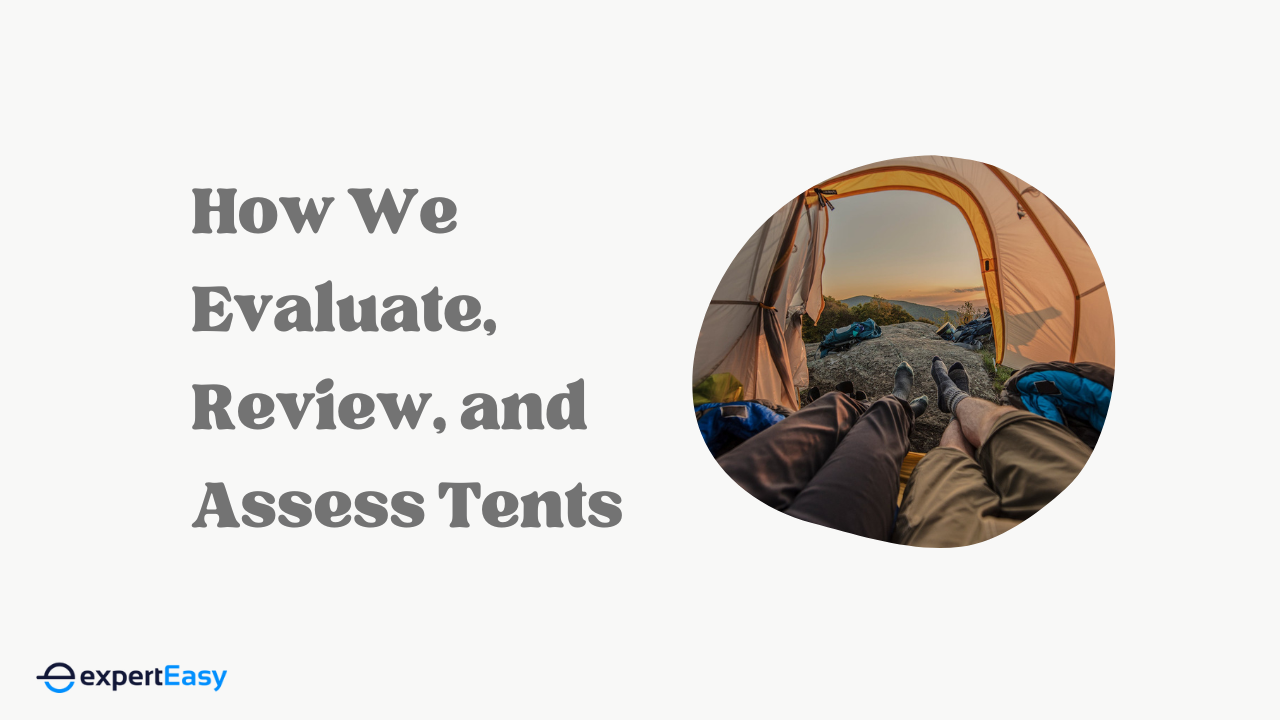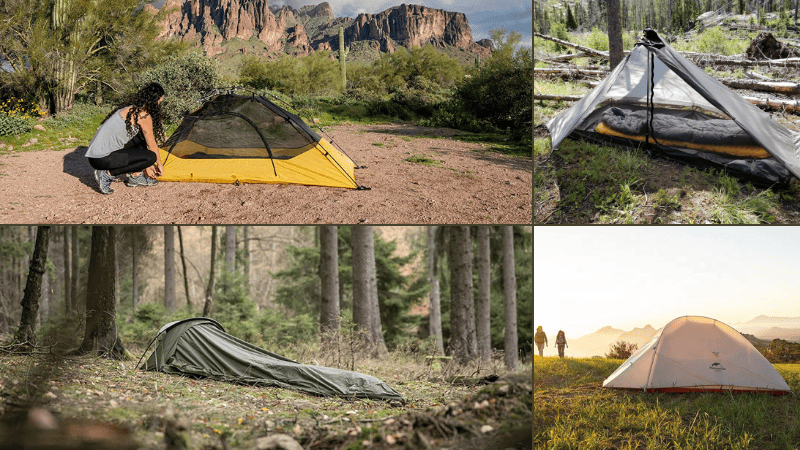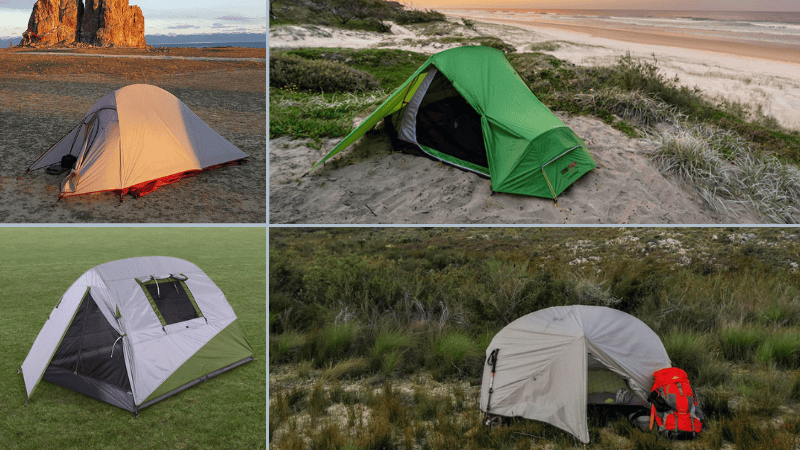Choosing the perfect tent to go hiking or trekking might have you lost for what to consider and what not. That's why we've taken the time and resources to find which best suits your needs out of your hands to help you easily decide.
Our in-depth research and reviews on the best tent types in Australia deep-dives into the essentialities for each tent activity or type. Our reviews aim to provide an unbiased and insightful guide to take into consideration when purchasing your tents.
Each tent on any of our lists is of very high quality, as we would make the same choices ourselves. Ultimately, user satisfaction is the final goal. Here's everything we consider in our tent reviews and research to allow you to explore the great outdoors confidently.
1. Is It Comfortable and Spacious?
It is important to consider space and weight before purchasing a camping tent. Having ample floor space is very beneficial, but this alone does not make an excellent tent. We also pay close attention to the shape and square footage of the floor and the listed peak ceiling height. Ceilings taller than 6 inches are preferable as you can stand up in them, as are floor plans that allow for additional sleeping arrangements and storage.
In addition to interior dimensions, tents with adequate ventilation are considered vital for maintaining a comfortable interior climate in all weather conditions. Features like exterior vestibules also improve overall livability, with ample room to hang out.
Tent vestibules are the covered areas along the sides or front of your tent. They give you more space just outside your tent and are a great place to store gear, change muddy or wet clothes, leave shoes, or even cook.
When testing, we double-check the tent's measurements to make sure the interior space is accurate and use available vestibules to assess their practical usefulness. This mostly requires living inside the tent for at least one full day and night to learn firsthand its ideal capacity, the boundaries of its ventilation, and obtain a broad perspective on its "livability."
2. How Easy Is It to Set Up?
Your camping experience will be impeded if your tent is tough to set up or pack down, even if it is comfortable and has a lot of space. But this is relative depending on your outdoor activity. If your planned outing requires packing and unpacking your tent regularly, then consider the ease of setting up.
For most designs, ease of set-up is determined by how the poles attach to the canopy and the function of the vestibule or rainfly. However, Some designs are usually easier to manage than others. An example is instant cabins that come with pre-attached poles. Tents with more poles typically require a little more effort, whereas those with fewer poles and linked designs take much of the guesswork out of pitching a tent.
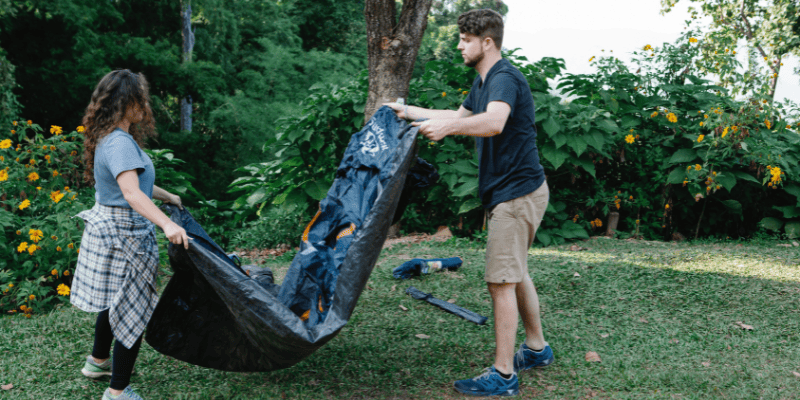
Tents with a colour-coding system are also an excellent and thoughtful choice to help you figure out what goes where. This is especially useful when setting up a tent in less-than-ideal conditions, such as in low light or during a rainstorm.
During testing, we pitch every tent, irrespective of capacity, with a single person. We take note of any difficulties that arise as a result of height or complicated layouts. We also take notice of any distinguishing characteristic that makes a tent particularly easy to pitch.
3. Is It Resistant to Harsh Weather Conditions?
A decent camping tent should be resilient enough to withstand temperature changes, weather fluctuations, and a significant bit of wind. Nature sometimes has different plans for when we want to spend time outside. Having a good tent that can withstand the unpredictability of the weather is crucial.
As such, during research, we look at the shape and coverage area of a tent’s rainfly, and the quality and structure of its pole system. We also evaluate the layout of its guylines to get an idea of how well it should perform. When available, we also look at the hydrostatic head test ratings. Though not every manufacturer reveals this, the headrest ratings indicate how the tent is likely to function.
A hydrostatic head rating is a way to figure out how much water pressure a waterproof material can handle before it starts to leak. Tents with a less than 1,200 mm rating can fend off light, short-lived showers whereas those with ratings above 2,500 mm can withstand heavy rain, snow, and strong winds.
When testing, we also assess the tent's sturdiness once it has been set up in the field. How does the seam taping on the tent appear? Does it cover the tent's body and fly? Are there any openings in the rainfly's protection that let water get inside the tent? Are the zippers impervious to entry?
A tent has several features that contribute to keeping it dry. Ideally, we keep each tent in some harsh weather to evaluate. When there is no rain to perform this test, we create rain in our backyards by combining hoses and sprinklers to produce the desired result. As regards wind resistance, the same guidelines mainly apply. We assess a tent's poles for strength and check the aerodynamics of its design with the fly in place.
4. What Is the Tent's Seasonality?
Tent seasonality is a very important metric that indicates how substantial the tent is. It's also a measure of your tent's ability to handle tough or harsh weather conditions. The terms “3-season tent” and “4-season tent” are industry-standard, and you’ll see them a lot in our tent reviews. Here's what they mean and how we evaluate them during our reviews.
3-season tents are compact, lightweight tents that are great for hiking. They work well for camping and are by far the most popular choice of tents. 3-season tents are lightweight shelters designed for the relatively temperate conditions of spring, summer, and fall. They are typically made of lighter materials and often incorporate mesh in their build for airflow. They protect against wind, rain, insects, and other hazards. Three-season tents are typically cheaper, lighter, and better suited to hotter climates.
4-season tents, on the other hand, are heavy-duty tents. Sometimes referred to as 'winter tents' or ‘mountaineering tents.’ They are designed to withstand intense weather conditions, reduce condensation, offer protection from adverse weather conditions, and have a double wall. Most 4-season tents feature flat roof spaces where snow can accumulate and are eliminated by a rounded dome design. They also tend to be larger.
The numbers represent scores and don't indicate the number of seasons you can use the tent. The ratings for 1-season and 2-season tents are almost the same. The 3-season tent is a compromise between 2 and 4. The 4-season tent is the winter tent. And the 5-season tent is for an expedition.
Deciding Between 3-Season or 4-Season Tents
It all comes down to how you intend to use your tent. 3-season tents are the way to go if you're not camping in the cold, snow or frequent high winds of 30+ mph. They're lighter, cheaper, and easier to use, and they provide enough protection for the majority of users.
However, if you require strength, flexibility, and warmth, a 4-season tent may surely bring peace of mind and comfort, especially when the weather can become too challenging in your tent-use environment that might otherwise flatten a 3-season tent.
5. Is It Made of Strong, Durable Material?
Durability has the most impact on a tent's value, and as such, we spend a significant amount of time evaluating it in the field. A lot goes into creating a tent that will hold against the harsh conditions of outdoor life, year after year. One inferior design decision or low-quality material can cause a tent to fail.
In our reviews, we take into account the type of fabric used as well as its thickness. We consider the pole system along with minor load-bearing details like guylines, stitching, and the tent's hardware. Then we evaluate existing customer reviews available to identify any possible weak points reported by other campers.
Where necessary, we carefully inspect each of these elements firsthand in the testing field and test any issues or worries other campers may have reported from previous reviews. But more important to our research is the feel and functionality of heavy-wear components such as zippers, seams, floors, poles, and mounting hardware.
6. How Heavy Is It to Carry Around?
Weight and packed size are characteristics of least priority on our assessment since the majority of tents are solely designed for usage while camping and driving in your vehicle. We keep a close eye on the size of a tent after it's been pitched and packed back into its carry bag to confirm that the packed weight and dimensions match what the manufacturer says.
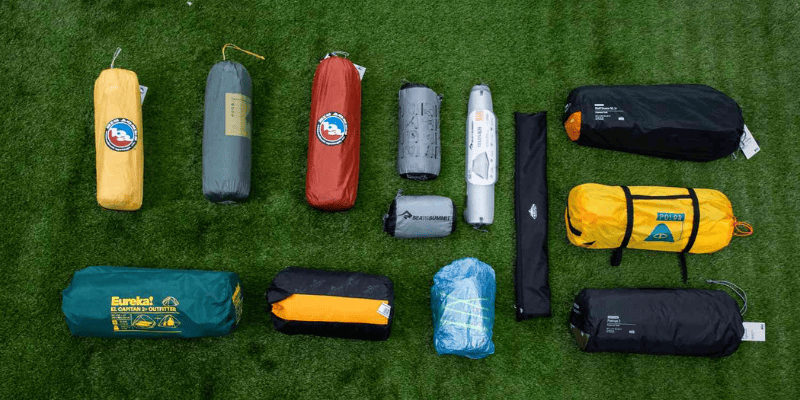
Still, depending on your outdoor activity, a lightweight tent might prove very beneficial or improve your experience. Thus, we evaluate each tent to other tents of the same size (four people, six people, etc.) to see how they compare. Despite having similar dimensions when pitched, some tents are lighter and smaller when packed than others, giving them an advantage by freeing up more space in your vehicle or camping gear.
Hybrid tent models are, however, one exception to the rule. They are designed to double as both backpacking and camping tents. In situations such as these, we verify that these tents are realistically compact and light enough to be split between backpacks and carried long distances.
7. Is the Price Reflective of Its Quality?
Price only sometimes equates to quality. Determining the value of any given tent is highly subjective. In our research, we evaluate a tent's current price against others of similar size and features to see where it fits into the larger picture. The value we place on each tent focuses on the other factors listed above and the tent's selling price.
Most camping tents provide the basic essentials, such as interior space and water resistance, for a good camping experience. But some do so for significantly less money than others. As the price of a tent increases, we spend time in the field determining whether the unique features of the tent justify the price increase. Weatherproofing, high-quality materials, and dependable manufacturer warranties are essential features that will always add value to any shelter. Others are much more reliant on specific use cases.
Hardcore mountaineering tents, for example, are typically several hundred dollars more expensive than the average three-season shelter tent. However, that cost is justified if you camp year-round in extreme conditions. On the other hand, the latest high-tech materials and design will provide little more value for an occasional camper than they would out of a budget-focused pick with a roomy interior and an easy setup.
Other Notable Features We Evaluate
Other essential factors we consider sometimes include:
- Peak Height: A tent with a tall peak height allows you to stand up when changing clothes or offers a high ceiling. The peak height of tents is listed in the specifications.
- Length of Tent’s Floor: If you’re over 6 feet or just prefer extra space, tents with a floor length of 90 inches (rather than the more typical 84–88 inches) are ideal.
- Rainfly: A rainfly is a separate waterproof cover designed to fit over the roof of your tent. It is used whenever rain or dew is expected or if you must retain extra warmth. There are two common rainfly varieties. Roof-only rainflies allow more light and views while offering fair rain protection and full-coverage rainflies which provide the best wind and weather defence.
- Tent Material: Be mindful that higher-denier cloth canopies and rainflies are more durable than lower-denier ones when you shop. Also, tent floors with seam tape and high-denier textiles are less likely to leak.
- Tent Doors: When choosing your tent, consider the number of doors you need and their orientation. If camping with family, it is advisable to choose a tent with multiple doors to avoid having to climb over each other or getting into each other's way. Also, note how easy or noisy the doors are to zip open and shut.
- Vestibules: Vestibules are shelters or awnings attached to your tent to store or shelter your muddy or dusty boots or keep your packs out of the rain. They can be an integral part of the rainfly or add-on items sold separately.
- Ventilation: Mesh panels allow views and promote cross-ventilation, both of which help control condensation. For hot, humid climates, seek out larger mesh panels.
- Poles: A tent pole structure help determines how easy or hard it is to pitch the tent. Fewer poles imply faster setup. Threading poles through lengthy pole sleeves are more difficult than attaching them to clips. To balance strength, ventilation, and convenience of assembly, many tents use both clips and short pole sleeves. Colour-coded corners and pole clips also make setup faster.
Our Tent Reviews
For various use cases, camping trips, and preferences, here are some of our in-depth tent guides and reviews:
- Best motorcycle tents.
- Best hard-shell rooftop tents.
- Best hiking tents.
- Best one-person tents.
- Best lightweight family tents.
Summary
Regardless of the use case or environment, there is a tent out there that can keep you dry and comfy. But the right experience begins with choosing the right tent type for your camping type and environment.
Now that you're well-informed on how we assess and review our tents, you're in an even better position to understand, evaluate, and make a more informed purchase from any of our tent reviews and analysis.

